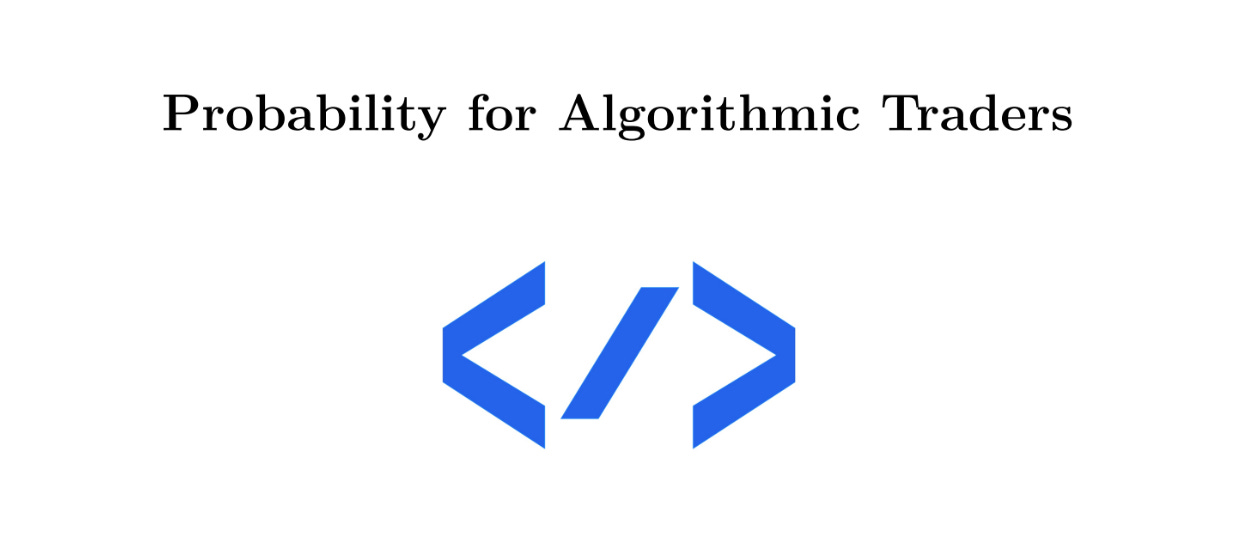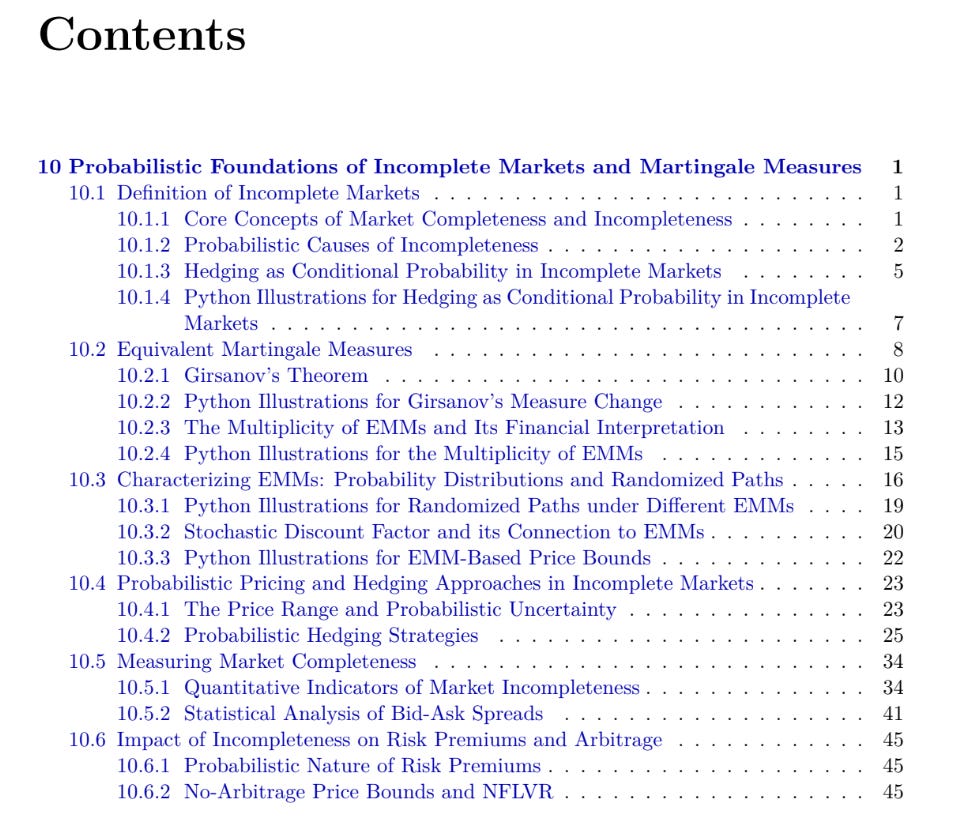[Quant Lecture] Foundations of Incomplete Markets
Probability for algorithmic traders
Why most models assume too much—and how martingale measures reveal the truth about market incompleteness
Complete markets are a myth. And if your models assume otherwise, you’re building on sand. Real markets have gaps, constraints, and unhedgeable risks. The fix? Measure uncertainty the right way.
This chapter gives you the tools to model financial reality—where replication isn’t perfect, and probability isn’t unique.
What’s inside:
🔹 Martingale measures decoded: Learn the logic behind equivalent measures, risk-neutral pricing, and the multiple-EMM world of incomplete markets.
🔹 Replicability redefined: Understand why perfect hedging is often impossible—and how spanning, rank, and state-price density structure market limitations.
🔹 From no-arbitrage to non-uniqueness: Explore the frontier between arbitrage-free pricing and the explosion of valid probability measures in incomplete environments.
🔹 Probabilistic tools for real markets: Use filtration, stochastic kernels, and conditional expectation to navigate evolving information under uncertainty.
🔹 Trading implications: Discover how market incompleteness distorts option pricing, skews implied volatility, and creates edge in mispriced hedging gaps.
🔹 Python-ready frameworks: Simulate multi-EMM pricing, span analysis, and partial replication strategies directly in code.
This isn’t abstract math. This is probability for markets that break the rules—where assumptions die, and uncertainty becomes your most valuable asset.




